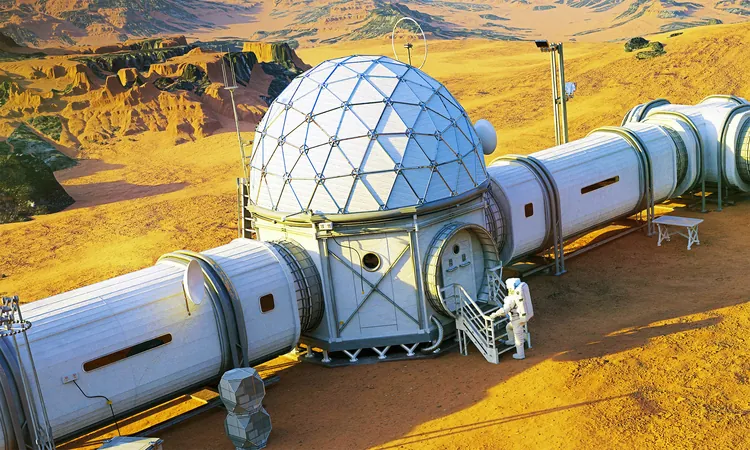
NASA to Use Fungi for Building Homes on Mars and the Moon: A Revolutionary Leap in Space Exploration!
2024-10-04
Author: Rajesh
Imagine a future where astronauts on Mars or the Moon grow their own habitats from mushrooms. It sounds like science fiction, but NASA is turning this vision into reality through groundbreaking research that utilizes mycelium, the root structure of fungi, as a building material.
Harnessing the Power of Fungi
Leading this innovative initiative is Lynn Rothschild, a senior scientist at NASA’s Ames Research Center in California's Silicon Valley. Her project, aptly named “Mycotecture Off Planet,” aims to harness fungi's natural properties to create sustainable living environments for astronauts.
With a significant boost of $2 million from NASA's Innovative Advanced Concepts (NIAC) program, Rothschild's team is diving deeper into the potential of fungi. Walt Engelund, associate administrator of NASA’s Space Technology Mission Directorate, emphasizes the agency's dedication to advancing technologies for housing astronauts and facilitating essential research.
The Science Behind Space Homes
So, how do astronauts plan to grow their homes? Instead of transporting heavy construction materials from Earth, they would bring along lightweight frameworks that contain dormant fungal spores. Just add water, and watch as the spores thrive into mycelium, forming strong, intricate structures that can serve as habitats on extraterrestrial surfaces.
This innovative approach not only reduces the resources needed for space expeditions but also lightens the payload for missions. The ability to manufacture habitats in situ may be the key to sustainable off-Earth living.
Multi-Purpose Fungal Materials
NASA’s vision extends beyond mere shelter. The properties of mycelium could lead to the development of versatile materials that not only serve as housing but also perform essential functions like water filtration and nutrient extraction from waste materials. These capabilities are vital for sustaining life in the harsh environments of Mars and the Moon.
Significant Progress Already Made
Rothschild's team has already achieved impressive milestones in their research. Previous funding allowed them to explore the feasibility of mycelium-based biocomposites and prototype designs. Their next steps include enhancing material properties and conducting experiments in low Earth orbit—crucial phases before potential real-world application on the Moon or Mars.
As NASA prepares for its Artemis missions, which aim to establish a human presence on the Moon and beyond, ideas like Mycotecture Off Planet could revolutionize how humans colonize other planets.
The Broader Impact of Fungal Research
Why does this matter to us on Earth? The breakthroughs stemming from this research may inspire sustainable construction practices back home. As we face the realities of climate change and resource depletion, the eco-friendly materials developed for space could pave the way for greener building technologies on Earth.
Moreover, the excitement generated by such pioneering projects fosters scientific curiosity and innovation in future generations, encouraging exploration beyond conventional boundaries.
A Future Rooted in Fungi?
As NASA invests in this remarkable research, the fusion of biology and technology highlights the agency's commitment to creating sustainable living solutions in space. The thought of mycelium-based construction isn't just a dream anymore—it's a tangible possibility.
So, the next time you see a mushroom in your garden, consider its potential role in humanity's journey to the stars. The intersection of nature and technology is expanding our horizons in ways we never imagined, placing us on the brink of an extraordinary new era in space exploration.
Stay tuned for more groundbreaking updates from NASA and the world of space science!



 Brasil (PT)
Brasil (PT)
 Canada (EN)
Canada (EN)
 Chile (ES)
Chile (ES)
 España (ES)
España (ES)
 France (FR)
France (FR)
 Hong Kong (EN)
Hong Kong (EN)
 Italia (IT)
Italia (IT)
 日本 (JA)
日本 (JA)
 Magyarország (HU)
Magyarország (HU)
 Norge (NO)
Norge (NO)
 Polska (PL)
Polska (PL)
 Schweiz (DE)
Schweiz (DE)
 Singapore (EN)
Singapore (EN)
 Sverige (SV)
Sverige (SV)
 Suomi (FI)
Suomi (FI)
 Türkiye (TR)
Türkiye (TR)